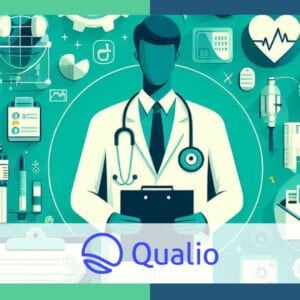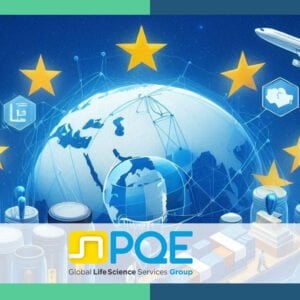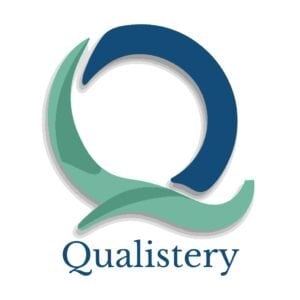The Rising Threat of Counterfeiting in the Pharmaceutical Industry
The global health threat posed by counterfeit pharmaceutical products is significant and growing. The World Health Organization (WHO) estimates that counterfeit drugs result in approximately one million deaths each year. These fraudulent medicines, often disguised as authentic treatments, can contain incorrect doses, wrong ingredients, or even toxic substances, leading to treatment failure, severe adverse reactions, and in many cases, death.
Beyond the impact on patient health, counterfeiting also has significant economic implications for pharmaceutical companies and the global economy as a whole. According to estimates by the International Chamber of Commerce (ICC), counterfeit pharmaceuticals cost legitimate manufacturers billions of dollars per year. Additionally, governments face rising healthcare costs due to increased medical complications caused by fake drugs.
To address these concerns, robust security measures are essential throughout the pharmaceutical supply chain.
Regulatory Frameworks
Recognizing the seriousness of counterfeiting in the pharmaceutical industry, regulatory bodies across the globe have established standards and guidelines to ensure patient safety. International organizations such as the World Health Organization (WHO), European Medicines Agency (EMA), Food and Drug Administration (FDA), and others have implemented regulations requiring appropriate packaging security features.
The European Union, in particular, has established a robust regulatory framework to prevent the commercialization of falsified medicinal products. This framework is detailed in the Commission Delegated Regulation (EU) 2016/161, supplementing the Directive 2001/83/EC.
A key component of these regulations is the requirement for a unique identifier on the packaging of certain medicinal products. This unique identifier is a safety feature that allows for the identification and authentication of medicinal products. It should include a product code, a serial number, a national reimbursement and identification number, the batch number, and the expiry date. These elements not only facilitate recall, withdrawal, and return procedures but also enhance pharmacovigilance.
The unique identifier should be encoded using a standardized data structure and syntax. This ensures it can be correctly recognized and decoded throughout the Union by commonly-used scanning equipment.
The unique identifier is compared against a common repository system that’s accessible from any country of the EU, and that contains information on the safety features. This system enables the end-to-end verification of all medicinal products bearing safety features.
The decommissioning of the unique identifier, which is the process of marking it as “inactive” or “used” in the repository system, should be performed when the medicinal product is supplied to the public. This way, the possibility of reusing a previously authorized unique identifier is blocked. All the operations concerning a unique identifier should be stored in the repositories system for future reference and traceability.
Another key safety feature required by the regulations is an anti-tampering device. This device is crucial in preventing counterfeiting as it allows for the detection of any unauthorized access to the packaging of the medicinal product. This ensures the integrity of the product and provides a clear indication if the product has been tampered with.
The authenticity and integrity of the safety features placed on the packaging of a medicinal product should be verified at the time the medicinal product is supplied to the public. This ensures that only authentic and untampered products reach the end consumer.
Medicinal products at higher risk of falsification should undergo additional verification by wholesalers throughout the supply chain. This additional layer of verification minimizes the risk of falsified medicinal products circulating undetected for lengthy periods of time.
In the case of a product that is not authentic, the manufacturer is required to avoid the release of the product for sale or distribution and must immediately inform the authorities. This regulation is crucial in preventing the circulation of counterfeit drugs and ensuring the safety of the public.
Pharmaceutical Packaging Technologies
In order to prevent counterfeit, there are numerous pharmaceutical package security technologies. These technologies are designed to add layers of security that make it increasingly difficult for counterfeiters to replicate authentic medicinal products.
Now, let’s delve deeper and analyze some of these innovative technologies that are shaping the future of pharmaceutical packaging security.
Physical Security Measures in Packaging
Tamper-evident packaging is a key component of pharmaceutical security. It allows for the detection of unauthorized access to a package, ensuring its integrity throughout the distribution process. Tamper-evident features include seals, shrink bands, breakable caps, and blister packs that make it evident if a product has been tampered with or opened.
Innovative labelling techniques are also employed to prevent label removal and reapplication. These techniques involve using adhesive labels that tear upon removal or leave behind residue when tampered with.
Another important aspect of physical security measures is the use of packaging materials with unique identifiers and authentication features. This includes technologies such as holograms, colour-shifting inks, embossing, and security printing techniques that make counterfeiting more challenging.
Serialization and Track-and-Trace Technologies
Serialization refers to the unique identification of individual drug units or product batches through the assignment of unique serial numbers or codes. These serial numbers are captured throughout the supply chain using track-and-trace systems, enabling end-to-end visibility and traceability.
Track-and-trace technologies provide real-time monitoring of pharmaceutical products from production all the way to end-users. These systems utilize barcode scanners, RFID (Radio-Frequency Identification) tags, or other digital identifiers to capture data at various points in the supply chain. This allows for better control over product movement and enables quick identification of counterfeit or diverted goods.
Implementing serialization and track-and-trace technologies can significantly enhance supply chain transparency, reduce counterfeiting incidents, and ensure patient safety by enabling rapid recall management in case of product quality issues.
Authentication Technologies
Authentication technologies play a vital role in verifying the genuineness of pharmaceutical products. Barcodes, QR codes, and Data Matrix codes are widely used for product verification and authentication. These codes can be scanned using smartphones or dedicated scanners to retrieve product information and verify its authenticity.
Holograms, colour-shifting inks, and security printing techniques are also employed as additional layers of security. These features are difficult to replicate and act as visual indicators of a genuine pharmaceutical product.
Radio-Frequency Identification (RFID) technology is a method of tracking and identifying products using radio waves. RFID systems consist of two main components: a tag and a reader. The tag, which is attached to the pharmaceutical package, contains a microchip and an antenna. The microchip stores unique identification data about the product, such as its name, batch number, expiry date, and other relevant information. The antenna enables the tag to transmit this data to the reader.
The reader, which can be a handheld device or a fixed installation, emits radio waves that activate the RFID tag. Once activated, the tag transmits its data back to the reader, which then forwards the information to a computer system for processing and analysis. Their main benefit is that the reader doesn’t need to be aligned with a scanner for reading; RFID tags can be read from a distance and through packaging materials. This makes the process of tracking and verifying products faster and more efficient.
Mobile technology
Mobile technology plays a significant role in preventing medicine counterfeiting and enhancing patient safety. With the widespread use of smartphones, mobile technology has become an accessible and effective tool in the fight against counterfeit drugs. Many pharmaceutical products now come with barcodes, QR codes, or Data Matrix codes on their packaging. These codes can be scanned using a smartphone to verify the product’s authenticity.
Near Field Communication (NFC) technology is utilized in combination with mobile apps to facilitate easy verification of product authenticity by consumers. By tapping their smartphones on NFC-enabled packaging, patients can access important information about the medication they are consuming and check if it is genuine.
Anti-Counterfeiting Technologies in Drug Production
Beyond packaging security measures, anti-counterfeiting technologies are also integrated into the drug production process itself. Advanced manufacturing techniques such as 3D printing allow for intricate designs that make it difficult to replicate drugs accurately. The complexity introduced by 3D-printed components significantly reduces counterfeiting risks.
Microscopic tags and markers are incorporated during drug formulation or production processes to enable in-process authentication and traceability. These microscopic features can be detected using specialized equipment at various stages of manufacturing or during inspections at customs checkpoints. The presence of these markers confirms the authenticity and origin of the drug.
Integration of security features during drug formulation and production ensures that counterfeiters face significant challenges when attempting to replicate pharmaceutical products.
Supply Chain Security and Collaboration
Ensuring supply chain security involves collaboration among all stakeholders, including pharmaceutical manufacturers, packaging suppliers, distributors, pharmacists, healthcare providers, and regulatory agencies. It requires implementing secure logistics and distribution practices to minimize the risk of counterfeiting at each stage.
Stakeholders in the pharmaceutical supply chain need to undergo training programs and awareness campaigns to detect counterfeit products effectively. These programs heighten their understanding of security features, enable them to identify suspicious packaging or labelling inconsistencies and equip them with reporting mechanisms to alert authorities about potential counterfeits.
Collaboration between governments, law enforcement agencies, industry associations, and technology providers is crucial in developing effective strategies against counterfeiting. Sharing best practices, intelligence on emerging threats, and implementing joint initiatives can help create a robust defence against counterfeit drugs.
Future Trends and Emerging Technologies
The fight against counterfeiting in the pharmaceutical industry continuously evolves as new technologies emerge. Artificial Intelligence (AI) and Machine Learning (ML) algorithms are being developed to analyze large volumes of data and identify patterns that indicate counterfeit activities. AI-powered systems can swiftly identify anomalies in supply chain data or product characteristics that may signal the presence of fake drugs. As technology advances, the pharmaceutical industry will continue to explore new ways to combat counterfeiting and ensure patient safety.
Blockchain technology holds great promise for enhancing traceability and transparency throughout the pharmaceutical supply chain. By recording transactional data in an immutable distributed ledger, it becomes nearly impossible to tamper with or alter information related to drug manufacturing, distribution, or authentication events.
Nanotechnology is another emerging field offering microscopic identification tags for enhanced authentication. These molecular tags can be incorporated into packaging materials or directly onto dosage forms themselves without affecting their stability or efficacy. Their small size makes them difficult to replicate accurately by counterfeiters.
As technology advances, the pharmaceutical industry will continue to explore new ways to combat counterfeiting and ensure patient safety.
Conclusion
The battle against counterfeit drugs is indeed a formidable one, but with the right combination of regulations, technology, and collaboration, it is a battle that can be won. By demystifying the complexities of pharmaceutical package security technologies, we hope to shed light on the importance of these measures and their role in protecting public health and safety.
Get ready to amplify your knowledge and jam with us at an exclusive webinar on package security in the pharmaceutical industry!

With a dedication to serving the pharmaceutical industry, Qualistery specializes in hosting informational webinars that support both professionals within the pharma sector and service providers. Our commitment lies in empowering businesses to maximize their impact through engaging virtual events and strategic webinar solutions. Additionally, Qualistery supports life science companies through private GxP training and compliance services.








